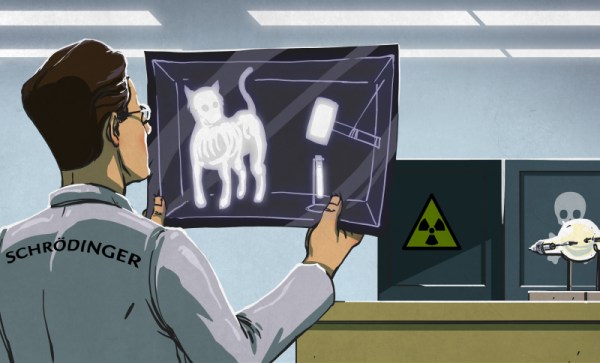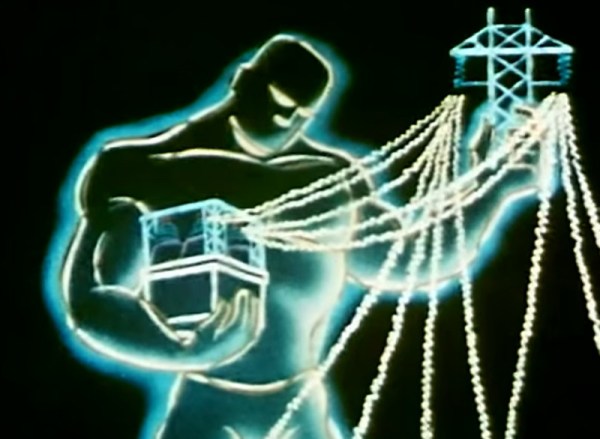The story of Schrodinger’s cat is well known, and one of quantum theory’s most popular phrases on the world stage. You can find his cat on t-shirts, bumper stickers, internet memes and the like. However, few know the origins of the cat, and how it came into being. I suspect many do not understand it beyond the “dead and alive at the same time” catchphrase as well. Not surprisingly, it was Einstein who was at the center of the idea behind Schrodinger’s cat. In a vibrant discussion between the two via letters across the Atlantic, Schrodinger echoed Einstein’s concerns with the following:
Contained in a steel chamber is a Geiger counter prepared with a tiny amount of uranium, so small that in the next hour it is just as probable to expect one atomic decay as none. An amplified relay provides that the first atomic decay shatters a small bottle of prussic acid. This and -cruelly- a cat is also trapped in the steel chamber. According to the wave function for the total system, after an hour, sit venia verbo [pardon my language], the living and dead cat are smeared out in equal measure.
This was the first mention of Schrodinger’s cat, and one would not be incorrect in stating that this paragraph from a letter was where the cat was born. However, the original idea behind the thought experiment was from Einstein and his loathing of the wording of the Einstein-Podolsky-Rosen (EPR) paper. He expressed his frustrations with Schrodinger with a few simple examples, who then catapulted it into his famous paradox . In this article we’re going to explore not so much the cat, but the meaning behind the thought experiment and what it is meant to convey, while keeping it simple enough for anyone to understand. So next time you see it on a t-shirt, you will be able to articulate the true meaning and know the real Schrodinger’s cat.
Continue reading “Will The Real Schrodinger’s Cat Please Stand Up”














